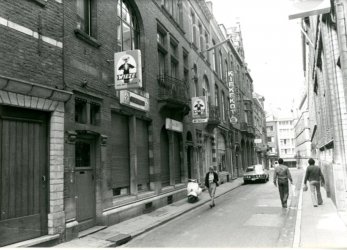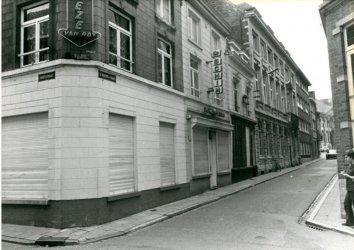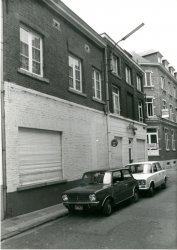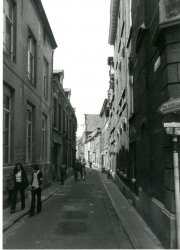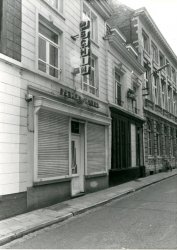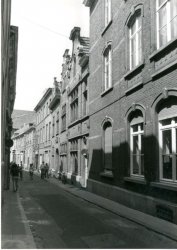| ||||
| Title: | History | |||
|---|---|---|---|---|
| Date of publishing: | April 07, 2015 | |||
| Hits: | 49606 | |||
| Category: | Other content | |||
| Language: | English | |||
| Also available in the following languages: | Dutch | |||
Geschiedenis
The Muntstraat in Leuven dates back to the Middle Ages and owes its name to the fact that in 1306 the Leuven Coin Atelier was transferred here. In 1605 the College of Liege was founded, which was later divided into different houses from number 9 to number 19. Miraculously, this row of houses was reasonable spared during the world wars, while the rest of the Muntstraat was almost completely destroyed. In 1913 the ‘Volksbank’ builds a stately building with neo-Gothic facade and art deco interior. However it wasn’t until 1918 that this building, on Muntstraat 3, was put into use as a bank and guildhall. More than 60 years later, the City services were housed here and currently it is – along with the building 'De Vlaamse Leergangen’ left to number 3 – in the hands of Cera, who has her offices, conference facilities and exhibit space there since 2018. After World War II several commercial and hospitality businesses settle in this street, including some "houses of pleasure '. Early 80s more and more restaurants appear, certainly when the Muntstraat will be redeveloped in 1983 as a pedestrian area.
In a second reconstruction in 2009, a work of art – that marks the Muntstraat as a culinary center – gets engraved in a bluestone paving stone on both entry points of the street.
Meanwhile, the Muntstraat, with its chain of cafes, taverns and restaurants in particular, has become the culinary main street of Leuven and far beyond. During the summer months it is the 'terrace street' where the Mediterranean atmosphere prevails and the holiday feeling is never far away.
